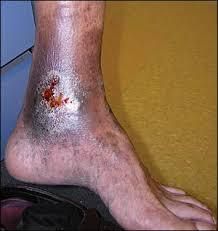When Experience Leads—Others Imitate
In Silicon Valley, people expect excellence—not slogans. At South Bay Vascular Center & Vein Institute, we’ve set that standard for almost three decades. While others chase profits, we pursue outcomes. Our care model is simple and sacred:
One Patient. One Doctor. One Nurse.
Every patient is personally evaluated by a board-certified vascular surgeon, not an NP, PA, or a marketing “vein specialist.” At South Bay Vascular, doctors—not financial managers—make the final call on your care.
Because for us, medicine isn’t a business strategy. It’s a calling.
The Vein Industry’s Dirty Secret
Scroll through social media and you’ll see it: endless ads from national “vein centers” promising Harvard-trained vein doctors, celebrity legs, and quick, painless fixes.
But look closer—many of these “experts” are anesthesiologists, pain doctors, or radiologists, not vascular surgeons. They’ve traded the operating room for an Instagram feed and call it innovation.
Treating varicose veins doesn’t make you a vascular surgeon—any more than test-driving a car makes you an engineer. A vascular surgeon is trained to understand the entire circulatory system—arteries, veins, and microvessels—across every organ of the body. They don’t just remove veins for cosmetics; they save legs, prevent strokes, and restore life to limbs most others would amputate.
What Makes South Bay Vascular Different
We treat the full spectrum of vascular disease—arterial blockages, aneurysms, carotid disease, non-healing wounds, and complex venous disorders.
Our surgeons trained at Columbia, UCSF, Washington University, NYU, and Harvard, and our results speak for themselves: thousands of successful limb-salvage cases, wound closures, and restored lives.
But our success didn’t come from fancy marketing. It came from doing the hard work—day after day, year after year, one patient at a time.
We don’t imitate others; we lead.
The Silicon Valley Analogy That Says It All
You can buy a smartphone that looks like an iPhone—but you’ll know the difference the moment you touch it:
Precision, craftsmanship, performance—those aren’t branding.
They’re the product of mastery.
That’s the same difference between a national “vein clinic” franchise and a true vascular surgery practice. Both may promise results, but only one is built from the inside out—designed by surgeons who understand every layer of vascular anatomy and who’ve spent their lives repairing what others only gloss over.
You don’t entrust your heart to a podiatrist. Why trust your circulation to a part-time “vein doctor”?
Doctors, Not Marketers
At South Bay Vascular, every diagnosis and every procedure decision is made by a board-certified vascular surgeon. We don’t delegate your health to staff with limited training or chase profits with unnecessary procedures. Our team includes highly trained nurses, registered vascular technologists, and surgeons working in perfect alignment—an ecosystem built on integrity, not income. A model we pioneered; not something we copied.
We’ve watched national chains expand through financial engineering—backed by private equity firms that see patients as revenue streams. That’s not us.
Our success was earned by putting patients first, not profits. Always has been. Always will be.
Now Is the Time
As the year draws to a close, most patients have already met their insurance deductibles—making this the perfect time to schedule vein or circulation treatments before 2026 resets your out-of-pocket costs.
Don’t wait. Varicose veins are more than cosmetic—they can signal deeper, dangerous circulatory issues.
Our Campbell-based outpatient vascular center offers same-day evaluations, advanced ultrasound diagnostics, and minimally invasive treatments—all performed by board-certified vascular surgeons.
If you want authentic expertise, decades of experience in the community setting and not advertising gloss, you’ll find it here.
Experience Matters—And It Shows
From Campbell to Santa Cruz, Gilroy to Fremont, and soon our new East San Jose office, South Bay Vascular continues to lead the fight against vascular disease throughout Silicon Valley. We didn’t buy this reputation; we didn’t copy the model for success from another vascular surgical practice: We earned it—one healed wound, one saved limb, and one grateful family at a time.
Because real care can’t be franchised. It’s built—by hand, by heart, and by the hands of surgeons who still believe medicine is about humanity, not margins.
If you or anyone you know suffers from a circulatory illness; require dialysis care; can’t sleep at night because of throbbing pain in your leg; or has varicose veins or swollen legs, call us today to schedule an appointent at 408-376-3626.
WE CAN HELP!
South Bay Vascular Center and Vein Institute
Leading the Fight against Vascular Disease In Santa Clara County for almost 30 years.
